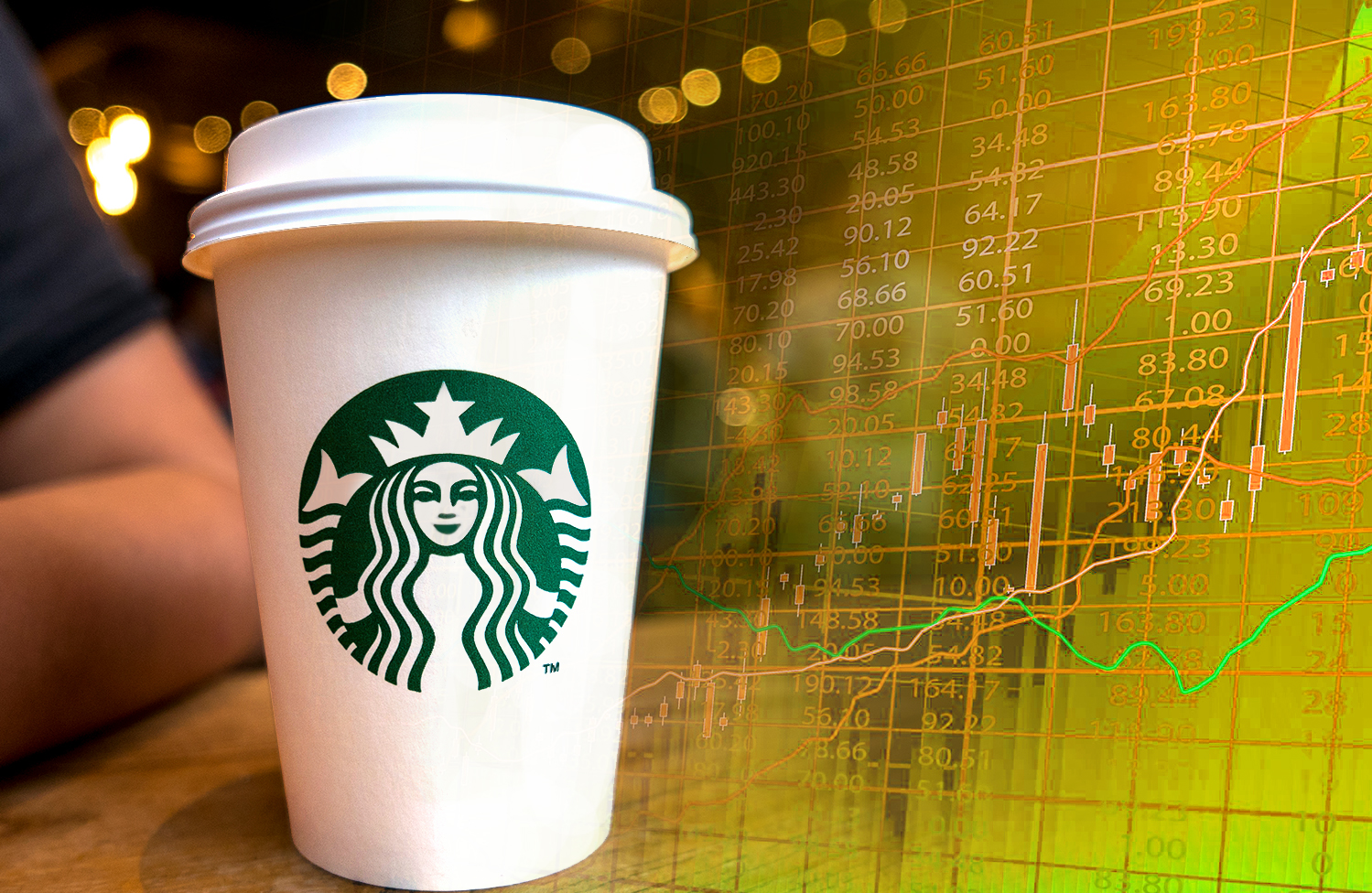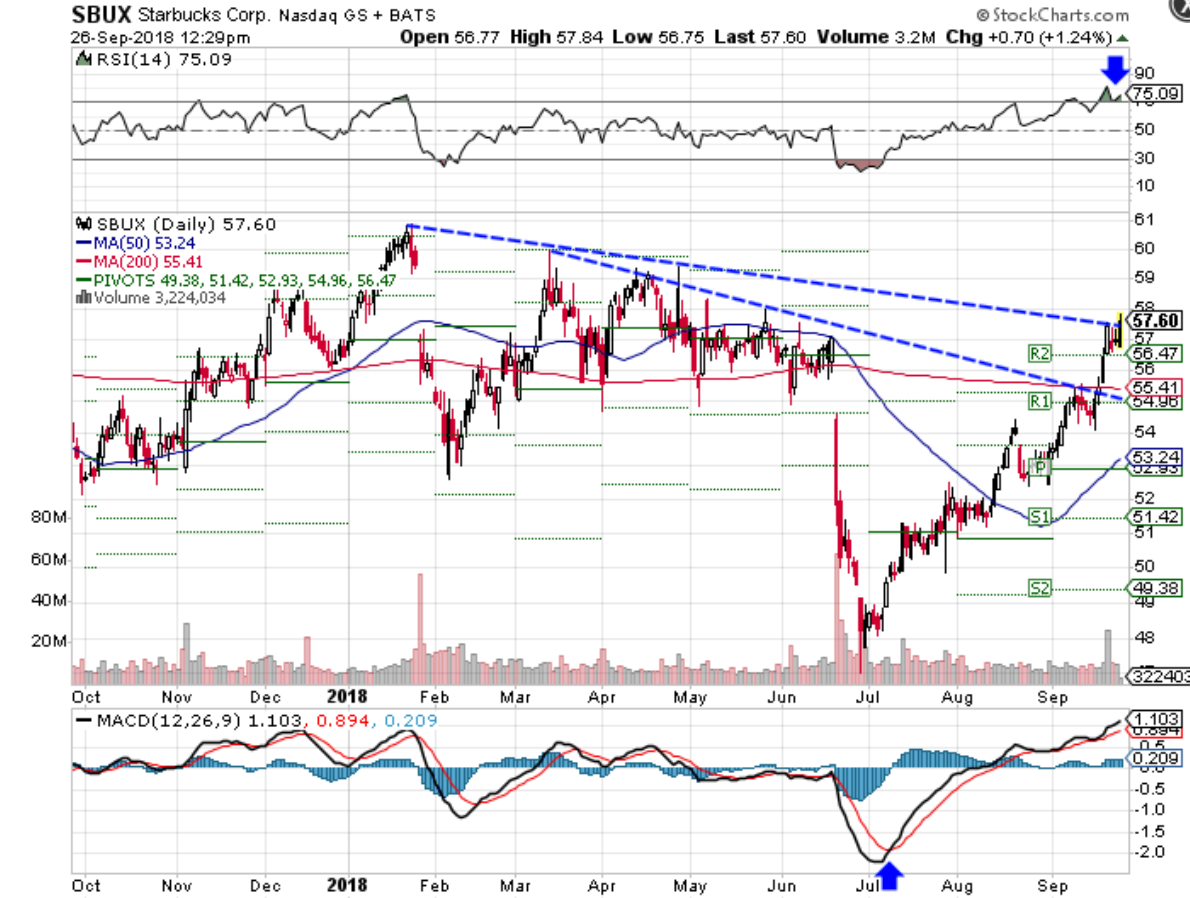Starbucks’ Financial Performance

Starbucks, the coffee giant, has been a consistent performer in the market, but like any other business, it faces its share of challenges. Let’s take a look at their financial performance, including revenue, earnings, and profitability, and see how they’re navigating the current economic landscape.
Revenue Trends
Starbucks’ revenue has been steadily growing over the past few years. In 2022, the company reported $32.3 billion in revenue, a 14% increase from the previous year. This growth can be attributed to a combination of factors, including increased demand for coffee, new product launches, and expansion into new markets.
Earnings Per Share
Starbucks’ earnings per share (EPS) have also been on an upward trajectory. In 2022, the company reported EPS of $3.28, a 16% increase from the previous year. This growth can be attributed to a combination of factors, including increased revenue, cost-cutting measures, and share buybacks.
Profitability
Starbucks’ profitability has been consistently strong. The company’s operating margin in 2022 was 17.5%, which is higher than many of its competitors. This high profitability can be attributed to a combination of factors, including strong brand recognition, a loyal customer base, and efficient operations.
Impact of Inflation, Supply Chain Disruptions, and Consumer Spending
Inflation, supply chain disruptions, and changes in consumer spending have all had an impact on Starbucks’ financial performance. For example, the company has had to raise prices to offset rising input costs, which could potentially impact customer spending. Additionally, supply chain disruptions have led to delays in getting products to stores, which could potentially impact sales.
Comparison to Competitors
Starbucks is the largest coffee company in the world, and it faces competition from a number of other players, including Dunkin’, McDonald’s, and Costa Coffee. While Starbucks has consistently outperformed its competitors in terms of revenue and profitability, it faces challenges from new entrants and evolving consumer preferences.
Growth Strategies
Starbucks is constantly looking for new ways to grow its business. Some of its key growth strategies include:
- Expanding into new markets, such as China and India.
- Developing new products and services, such as plant-based milk options and mobile ordering.
- Investing in technology, such as digital payment systems and personalized rewards programs.
Starbucks’ Business Operations and Strategies

Starbucks’ success isn’t just about brewing a mean cup of joe. It’s about building a global empire with a carefully crafted business model that focuses on customer experience, brand loyalty, and strategic expansion.
Starbucks’ Key Business Segments
Starbucks operates in several key business segments, each contributing to its overall revenue.
- Starbucks Coffee Company: This is the core of the business, generating the majority of revenue through the sale of coffee, tea, and other beverages in its company-operated stores. Think of it as the heart and soul of Starbucks.
- Licensed Stores: This segment involves licensing its brand to other companies, who operate stores under the Starbucks name. This allows Starbucks to expand its reach without directly managing every location.
- Global Coffee and Tea: This segment includes the sale of coffee beans, tea leaves, and other coffee-related products to businesses and consumers. Think of it as the “wholesale” side of Starbucks, where they sell the ingredients to other businesses.
- Starbucks Reserve: This segment focuses on premium coffee experiences, offering rare and unique coffees in select stores. It’s like the VIP section of the Starbucks world.
Starbucks’ Competitive Advantages
Starbucks has built a strong brand and established several competitive advantages that have helped it dominate the coffee market.
- Brand Recognition and Loyalty: Starbucks has a global reputation for quality and consistency. Customers trust the brand and often feel a sense of connection to its values. It’s like having a loyal friend who always knows what you want.
- Strong Distribution Network: Starbucks has a vast network of company-operated and licensed stores, ensuring widespread accessibility to its products. Think of it as having a coffee shop on every corner.
- Product Innovation: Starbucks constantly introduces new beverages, flavors, and food items to keep its menu fresh and exciting. It’s like having a never-ending supply of new coffee creations to try.
- Customer Experience: Starbucks prioritizes creating a welcoming and comfortable environment for its customers. Think of it as a cozy living room where you can relax and enjoy a good cup of coffee.
Starbucks’ Pricing Strategies
Starbucks employs a premium pricing strategy, charging higher prices than its competitors.
- Value-Based Pricing: Starbucks focuses on providing a premium experience and emphasizing the quality of its products. They believe that customers are willing to pay a premium for the brand and the experience. Think of it as “you get what you pay for.”
- Price Sensitivity: Starbucks understands that customers are price-sensitive, especially in a competitive market. They offer a range of products at different price points to cater to different budgets. Think of it as having something for everyone.
- Promotions and Discounts: Starbucks regularly runs promotions and discounts to attract new customers and retain existing ones. It’s like offering a little something extra to make customers feel appreciated.
Starbucks’ Customer Experience and Brand Loyalty
Starbucks has invested heavily in creating a positive customer experience, focusing on building a loyal customer base.
- Personalized Service: Starbucks baristas are trained to provide friendly and personalized service. They often learn customers’ names and orders, creating a sense of connection. Think of it as your local coffee shop where everyone knows your name.
- Rewards Program: Starbucks’ loyalty program, Starbucks Rewards, offers points for purchases, free drinks, and other perks. It’s like a little reward for being a loyal customer.
- Community Engagement: Starbucks actively participates in local communities, supporting charitable causes and events. Think of it as giving back to the community that supports them.
Starbucks’ Market Position and Future Prospects: Sbux Stock

Starbucks, the green siren of coffee, has a dominant position in the global coffee market. It’s not just about the coffee, though. Starbucks has become a lifestyle brand, a place to connect, and a haven for caffeine addicts worldwide. But with its size comes competition and challenges. So, let’s dive into the world of Starbucks’ market position and see what the future holds for the coffee giant.
Starbucks’ Market Share and Competitive Landscape
Starbucks holds a significant market share in the global coffee market, estimated at around 30%. This dominance is attributed to its brand recognition, extensive store network, and loyal customer base. However, Starbucks faces stiff competition from various players, including local coffee shops, fast-food chains offering coffee, and other global coffee giants like Dunkin’ Donuts and Costa Coffee. The competitive landscape is constantly evolving, with new players entering the market and existing players innovating to stay ahead of the curve.
Opportunities and Challenges Facing Starbucks, Sbux stock
Starbucks has several opportunities for growth in the future. Expanding into new markets, particularly in developing countries with a growing middle class, presents a significant opportunity. Starbucks can also tap into new product offerings, such as plant-based milk alternatives, cold brew, and nitro cold brew, catering to evolving consumer preferences.
However, Starbucks also faces challenges. The increasing popularity of specialty coffee shops and the rise of online coffee retailers pose a threat to Starbucks’ market share. Additionally, rising labor costs and commodity prices, particularly for coffee beans, can impact profitability. Starbucks needs to navigate these challenges while capitalizing on opportunities to maintain its market leadership.
Potential Growth Areas for Starbucks
Starbucks can explore various avenues for growth, such as:
- Expanding into New Markets: Starbucks can target emerging markets with high growth potential, like India and China, where the demand for coffee is increasing rapidly. This expansion would require adapting to local tastes and preferences and navigating cultural nuances.
- Developing New Product Offerings: Starbucks can continue to innovate with new products and flavors to cater to evolving consumer preferences. For example, they could develop unique coffee blends, offer more plant-based milk alternatives, and explore new cold brew variations.
- Strengthening Digital Presence: Starbucks can leverage technology to enhance the customer experience. This includes improving its mobile ordering and payment systems, introducing personalized recommendations, and integrating with delivery platforms.
- Focusing on Sustainability: Starbucks can further strengthen its commitment to sustainability by sourcing ethically produced coffee beans, reducing its environmental footprint, and promoting responsible waste management practices. This approach can attract environmentally conscious consumers and enhance brand image.
Starbucks’ Long-Term Strategic Goals
Starbucks has set ambitious long-term goals, including:
- Expanding its global footprint: Starbucks aims to increase its presence in new markets and expand its existing store network.
- Enhancing the customer experience: Starbucks is committed to providing a seamless and personalized experience for its customers through digital initiatives and innovative product offerings.
- Driving operational efficiency: Starbucks seeks to optimize its operations to enhance profitability and maintain its competitive edge.
- Strengthening its brand: Starbucks aims to reinforce its brand image as a premium coffee experience and a symbol of community and connection.
These strategic goals will significantly impact Starbucks’ future performance. The company’s success in achieving these goals will depend on its ability to adapt to changing market dynamics, innovate, and stay ahead of the competition.
SBUX stock has been on a roller coaster ride lately, with investors grappling with concerns over slowing growth and rising costs. One key figure to watch is Brian Nichols, the company’s CEO, who has been leading the charge to navigate these challenges.
Brian Nichols has a track record of success, but he faces a tough task in maintaining Starbucks’ dominance in the increasingly competitive coffee market. Ultimately, the performance of SBUX stock will hinge on the company’s ability to adapt and innovate under his leadership.
Starbucks stock, a staple in many investment portfolios, has been steadily climbing in recent months, fueled by a strong focus on innovation and customer loyalty. While Sbux has dominated the coffee space, it’s worth noting the success of other fast-casual giants like chipotle stock , which has seen significant growth in recent years due to its commitment to fresh ingredients and a loyal customer base.
This trend towards prioritizing quality and experience could be a key driver for both Sbux and Chipotle in the long run.
